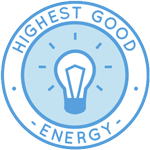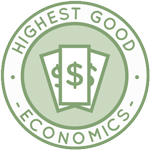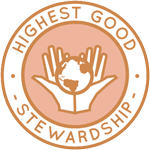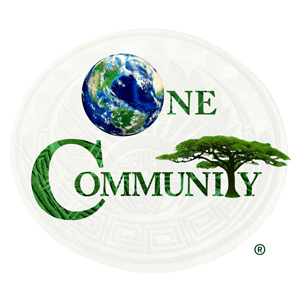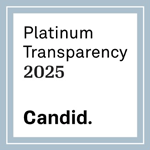Holistic Community Creation – One Community Weekly Progress Update #571
At One Community, our all-volunteer team is committed to forwarding holistic community creation by integrating sustainable approaches to food, energy, housing, education, economics, and social architecture, all for “The Highest Good of All.” Our open-source, free-shared solutions aim to regenerate the planet, serving as a blueprint for global collaboration.
- Here’s our project overview
- Here’s our world-change methodology
- Here’s how this becomes self-replicating
- Here’s how we are open source and free-sharing all the do-it-yourself designs

OUR MAIN OPEN SOURCE HUBS
Click on each icon to be taken to the corresponding Highest Good hub page.
One Community’s physical location will forward this movement as the first of many self-replicating teacher/demonstration communities, villages, and cities to demonstrated holistic community creation around the world. This is the February 26th, 2024 edition (#571) of our weekly progress update detailing our team’s development and accomplishments:
Holistic Community Creation
One Community Progress Update #571
DONATE | COLLABORATE | HELP WITH LARGE-SCALE FUNDING
CLICK HERE IF YOU’D LIKE TO RECEIVE AN EMAIL EACH WEEK WHEN WE RELEASE A NEW UPDATE
YOU CAN ALSO JOIN US THROUGH SOCIAL MEDIA
ONE COMMUNITY WEEKLY UPDATE DETAILS
HIGHEST GOOD HOUSING PROGRESS
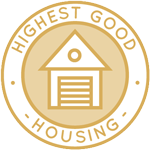 One Community is forwarding holistic community creation through Highest Good housing that is artistic and beautiful, more affordable, more space efficient, lasts longer, DIY buildable, and constructed with healthy and sustainable materials:
One Community is forwarding holistic community creation through Highest Good housing that is artistic and beautiful, more affordable, more space efficient, lasts longer, DIY buildable, and constructed with healthy and sustainable materials:
- Learn about: Our “First Steps of Holistic Community Creation” Crowdfunding Campaign
- Learn about the different holistic community creation housing models: 7 Sustainable Village Models
- Visit the holistic community creation open source portals for the first two: Earthbag Village OS Hub | Straw Bale Village OS Hub
This week, Loza Ayehutsega (Civil Engineer/Assistant Civil Engineer) completed another week focused on reviewing and addressing requested changes and content additions related to Earth Dam risk assessment and dam break hazard assessment. This week’s focus was on post-event recovery and different types of dam failure. Earthworks are a big part of One Community’s holistic community creation model. You can see her work on dam assessment in the collage below.
Stacey Maillet (Graphic Designer) finished what looks like the final round or revisions to the the Earthbag Village (Pod 1) assembly instructions for the Murphy bed. This involved reviewing and integrating final feedback covering a few additions to the assembly process and changing some links. Sustainable and DIY replicable furniture is a big part of One Community’s holistic community creation model. See pics below.
DUPLICABLE CITY CENTER PROGRESS
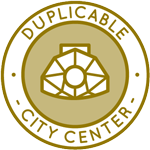 One Community is forwarding holistic community creation through a Duplicable and Sustainable City Center that is LEED Platinum certified/Sustainable, can feed 200 people at a time, provide laundry for over 300 people, is beautiful, spacious, and saves resources, money, and space:
One Community is forwarding holistic community creation through a Duplicable and Sustainable City Center that is LEED Platinum certified/Sustainable, can feed 200 people at a time, provide laundry for over 300 people, is beautiful, spacious, and saves resources, money, and space:
- Learn about this building and its function as part of holistic community creation: Duplicable City Center Open Source Hub
This week, Clarice Gaw Gonzalo (Architect) continued her work developing renders and the video walkthrough for the Duplicable City Center. She focused her efforts on the 4th-floor cupola, where she populated the space with a yoga instructor leading a class and integrated appropriate yoga equipment. In addition, she worked on the socialization and recreation loft, incorporating individuals engaging in interactive activities. She also enhanced an exterior view by introducing additional landscaping elements and vegetation for a more natural ambiance. Lastly, Clarice began rendering interior room designs, carefully incorporating people into scenes, and experimenting with lighting effects to achieve desired visual outcomes. Replicable recreation, education, dining, and gathering spaces as “Duplicable City Centers” are a big part of One Community’s holistic community creation model. You can see her renderings in the images below.
Justin Varghese (Mechanical Engineer) performed structural finite element analysis (FEA) of the City Center Hub Connector using Ansys software. Employing the software, he assessed the stress and deformation of the component under a 1000 lb load for materials hardwood and structural steel. The computed FEA model will serve as a basis for comparing other Hub Connector designs under similar loads, aiding in the selection of the optimal hub connector for the final design. Replicable recreation, education, dining, and gathering spaces as “Duplicable City Centers” are a big part of One Community’s holistic community creation model. The collage below shows his work for the week.
Julio Marín Bustillos (Mechanical Engineer) examined previous hub connector designs sourced from the website. He evaluated each design, noting its intricacies and nuances. Following this analysis, he augmented the existing information with a succinct yet informative description of the current design. In this description, he elaborated on the advantages inherent in the new design, elucidating its unique features and highlighting what distinguishes it from its predecessors. He underscored the potential performance enhancements expected from the new design iteration. However, Julio and his team acknowledge that further analysis is imperative to substantiate these expectations. Replicable recreation, education, dining, and gathering spaces as “Duplicable City Centers” are a big part of One Community’s holistic community creation model. The collage below shows his work for the week.
HIGHEST GOOD FOOD PROGRESS
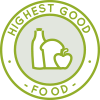 One Community is forwarding holistic community creation through Highest Good food that is more diverse, more nutritious, locally grown and sustainable, and part of our open source botanical garden model to support and share bio-diversity:
One Community is forwarding holistic community creation through Highest Good food that is more diverse, more nutritious, locally grown and sustainable, and part of our open source botanical garden model to support and share bio-diversity:
- Learn about the structures and how they relate to holistic community creation: Hoop House Hub | Aquapini & Walipini Open Source Hub
- See what we’ll be growing: Gardens & Hoop Houses | Large-scale Structures | Food Forest | TA
This last week, the core team made progress on the Highest Good Food Tools and Equipment document by incorporating additional power equipment, such as a tractor, skid steer, backhoe attachment, and other tools. They collaborated with the team to alphabetize the lists and categorize each item as either a tool, piece of equipment, or material. Food improvements are a significant part of how One Community is designed for holistic community creation. See their work in the collage below.
Charles Gooley (Web Designer) focused on the development of the Vegan Rice Recipes page, constructing several recipes including Healthy Vegan Gingerbread Quinoa Muffins, Cumin Brown Rice and Beef Curry with Kidney Bean Cucumber Salad, Italian-Style Roast Potato & Cabbage Wedges with Tomato & Lentils, Sweet Potato Apple and Noodle Breakfast Bake, Sweet n’ Spicy Rice and Chicken Bowls, Fusilli Pasta & Baked Chicken Thighs, Hearty Potato Breakfast Skillet, Lentil Sweet Potato Stew Teriyaki Beef and Vegetables with Brown Rice, Hash Brown Full Breakfast, Seasoned Rice, Sauteed Vegetables with Brown Sugar Roasted Ham, and Tuscan Spaghetti Squash and Pan Fried Tofu. Placeholder images were utilized until final images become available. Diverse food menus are a significant part of how One Community is designed for holistic community creation. See his work in the collage below.
Hayley Rosario (Sustainability Research Assistant) organized tools, equipment, and materials for the Highest Good Food project, arranging them in an initial list and subsequently alphabetizing both the list and corresponding images/descriptions. Additionally, she completed the task of incorporating resources not previously included in the EDITs document. In conclusion, Hayley identified and included relevant websites highlighting the benefits of school gardens at the end of the EDITs document. Food improvements are a significant part of how One Community is designed for holistic community creation. See below for pictures related to her work.
HIGHEST GOOD EDUCATION PROGRESS
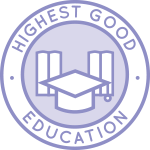 One Community is forwarding holistic community creation through Highest Good education that is for all ages, applicable in any environment, adaptable to individual needs, far exceeds traditional education standards, and more fun for both the teachers and the students. This component of One Community is about 95% complete with only the Open Source School Licensing and Ultimate Classroom construction and assembly details remaining to be finished. We’ll report on the final two elements to be finished as we develop them.
One Community is forwarding holistic community creation through Highest Good education that is for all ages, applicable in any environment, adaptable to individual needs, far exceeds traditional education standards, and more fun for both the teachers and the students. This component of One Community is about 95% complete with only the Open Source School Licensing and Ultimate Classroom construction and assembly details remaining to be finished. We’ll report on the final two elements to be finished as we develop them.
With over 8 years of work invested in the process, the sections below are all complete until we move onto the property and continue the development and open sourcing process with teachers and students – a development process that is built directly into the structure of the education program and everything else we’re creating too:
- Holistic community creation: Education Open Source Hub Overview
- How the components work together as part of holistic community creation: How to use the Education for Life Program
- Holistic community creation: Lesson Plans for Life – Lesson Plans How-to
- Holistic community creation: Foundations of Outstanding Leaders, Teachers, and Communicators
- Holistic community creation: Curriculum for Life
- Holistic community creation: Teaching Strategies for Life
- Holistic community creation: Learning Tools and Toys for Life
- Holistic community creation: Evaluation and Evolution
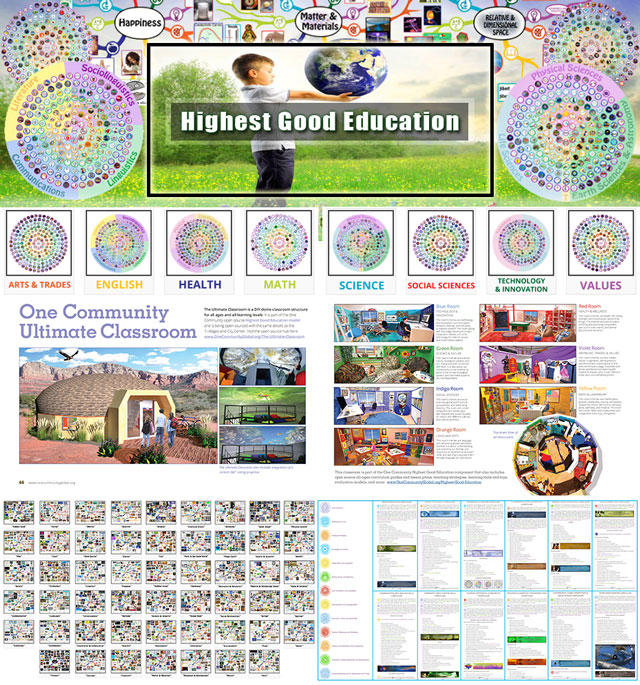
Highest Good Education: All Subjects | All Learning Levels | Any Age – Click image for the open source hub
HIGHEST GOOD SOCIETY PROGRESS
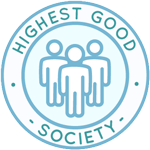 One Community is forwarding holistic community creation through a Highest Good society approach to living that is founded on fulfilled living, the study of meeting human needs, Community, and making a difference in the world:
One Community is forwarding holistic community creation through a Highest Good society approach to living that is founded on fulfilled living, the study of meeting human needs, Community, and making a difference in the world:
- Read the Highest Good society overview: Highest Good Society
- Learn about the model for fulfilled living and sharing: A Day in the Life
- Learn about the 4 economic models: RBE | For-profit | Non-profit | Entrepreneurship
- Learn about our open source community collaboration and management software: The Highest Good Network
This week, the core team completed 57 hours managing One Community volunteer-work review not included above, emails, social media accounts, web development, new bug identification and bug-fix integration for the Highest Good Network software, and interviewing and getting set up new volunteer team members. We also shot and incorporated the video above that talks about holistic community creation and how holistic community creation is a foundation of the bigger picture of everything One Community is doing. The pictures below show some of this work. See below for pictures related to this.
Another core team member worked on Highest Good Network PRs testing, confirming fixed PRs, resolving the issue of moving time entries to another task (#486) and fixing the button placement problem in PR1775. However, several PRs remained unresolved, such as fixing minor formatting issues on the Dashboard and Profile Pages (PR1958), where the “Click for user class information” mouseover text still persists. Additionally, issues were discovered with an updated pop-up window for time off requests, including problems with changing dates and the inability to request time off for weeks before the current date. Other unresolved PRs involved updating People Reports and fixing the New Max Personal Record award. Alongside PR testing, they reported new issues, including references to deleted accounts within the application and incorrect working week dates. Furthermore, they checked the status of tested PRs and resolved all remaining issues in the “Murphy Bed Instructions” PDF file. The Highest Good Network software is how we’ll be managing and objectively measuring our process for holistic community creation through our social architecture, construction, production, and maintenance processes. DIY furniture, like the Murphy Bed designs, are a big part of One Community’s holistic community creation model too. See below for pictures related to their work.
Aaron Wang (Fundraising Assistant) continued to help One Community with working on fundraising. Holistic community creation requires we get fully funded. Aaron focused on refining his research regarding the connections and narratives behind each fund associated with Leonardo DiCaprio. He identified email contacts of individuals likely to have insights into Leonardo’s philanthropic endeavors, aiming to enhance the process of connecting with funders. You can view this work in the collage below.
Cody Media Productions (Video Editing Company) focused on refining the intro video for the weekly progress update YouTube videos and incorporating feedback from the previous rough cut. They continued their efforts on the intro video. Cody Media Productions reviewed the feedback from the previous rough cut and made the necessary adjustments. Additionally, they focused on incorporating titles and transitions into the video to enhance its visual appeal and coherence. Their agenda includes submitting a third rough edit video, marking significant progress toward the project’s completion. These videos will showcase the open-source components of One Community as the prototype for holistic community creation. You can view this work in the collage below.
ADMINISTRATION TEAM
The Administration Team’s summary, covering their work administrating and managing most of One Community’s ongoing holistic community creation process was managed by Catherine Liu (Administrative and Analytics Assistant, Team Manager) and includes Alyx Parr (Senior Support Specialist), Camilla Okello (Administrative Assistant), Olawunmi “Ola” Ijisesan (Administrative and Management Support), Olivia Trojnar (Administrative Assistant), Purva Nantarajesh (Marketing Analyst), Ruiqi Liu (Administrative Assistant), Vriddhi Misra (Admin and Marketing Assistant), and Xiaolai Li (Administrative Assistant). This week, Alyx sourced and downloaded several videos for Jae, while also crafting a bespoke video for Olivia’s appraisal and engaging in enriching activities to enhance blog content. She immersed herself in video content for inspiration, updated previous blog posts for relevancy, and expanded upon the Rank Math document to optimize the blog’s SEO performance. Alyx ensured the recognition and integration of team members’ contributions, such as Vrddhi, Catherine, and Richelle, into collective progress, while also converting select videos into MP3 format for Jae’s seamless access to preferred content. Camilla completed administrative tasks by updating her WordPress blog with recent content, and improving SEO scores for two blogs, “Facilitating the Evolution of Sustainability” and “Highest Good for All Progress”. Catherine reviewed various teams and individual members, organized images and summaries, and worked on blog post edits and the Keyword Campaign Structure page. Ola reviewed PR Review teams’ work, provided feedback, trained new volunteers, and organized workspace tasks, submitting weekly summaries and corresponding images. Olivia, in her first week as an Administrative Assistant, underwent training, reviewed weekly summaries, edited individual summaries, and learned to optimize group photos for blog posts. Purva focused on preparing her team’s summary and collages for the blog, doing SEO optimization on previous posts. Ruiqi completed the review process for multiple teams, created collage images, utilized weekly summaries for SEO keywords, integrated comments, and organized web pages and spreadsheets. Vriddhi finalized reports and weekly summaries, optimized SEO for blog posts, reviewed PDF documents, and addressed feedback for project accuracy. Xiaolai reviewed summaries, improved charts and tables for spreadsheets, added references and illustrations, and organized documents for the weekly report. These are the managers helping us manage the current process of creating One Community as the prototype for our model holistic community creation. You can see the work for the team in the image below.
ALPHA SOFTWARE DEVELOPMENT TEAM
The Alpha Team’s summary, covering their work on the Highest Good Network software, was managed by Sucheta Mukherjee (Software Developer) and includes Chengyan Wang (Software Engineer) and Yongjian Pan (Software Engineer). The Highest Good Network software is how we’ll be managing and objectively measuring our process for holistic community creation through our social architecture, construction, production, and maintenance processes. This week, Chengyan resolved a conversation in PR #1956 for the HighestGoodNetworkApp, aligning the One Community announcement bio with organizational values and ensuring compatibility with existing features. He reviewed PR #1977, ensuring unit tests for the SaveButton component met standards, and began addressing a bug in the reusable list view component. Chengyan completed the UI for a reusable purchase request form, integrated Redux workflow, and added a new backend controller function. Backend enhancements included implementing a function to fetch reusable types. He also initiated a feature branch for the development of a reusable Purchase Item Form and completed RESTful endpoints for purchasing reusable record backend functionalities. Chengyan reviewed PR comments, implemented bug fixes in ReusablesTable.jsx, and initiated a similar fix for material and consumable list views. Sucheta focused on optimizing the functionalities of adding and removing recipients for the weekly summary report. She discovered that the class-based component weeklySummaryReport.jsx was overloaded with functions passed into the functional components PasswordInputModal.jsx and WeeklySummaryRecipientsPopup.jsx, which could handle these functions independently. She rewrote the functions to execute within these components, eliminating unnecessary prop transfer and expediting the process. Sucheta implemented a new useEffect hook to fetch the list of recipients from the database on the first render of WeeklySummaryRecipientsPopup.jsx and when a recipient is deleted, while the effectiveness of the cron job in sending emails is still under assessment. Yongjian spent the week debugging the declaration of the badgeCollection issue and investigating red squiggly lines under the last semicolon of the badgeManagement.js file causing compile time errors. See the Highest Good Society and Highest Good Network pages for more on how this relates to holistic community creation. View some of this work in the collage below.
BADGES BUGS SOFTWARE DEVELOPMENT TEAM
The Badges Bugs Team’s summary, covering their work on the Highest Good Network software, was managed by Shaofeng Li (Software Engineer) and includes Renan Luiz Santiago Martins César (Full-stack developer) and Xiao Zhang (Software Engineer). The Highest Good Network software is how we’ll be managing and objectively measuring our process for holistic community creation through our social architecture, construction, production, and maintenance processes. This week, Renan spearheaded the initiation of various projects aimed at advancing disaster recovery protocols, including the creation of the DRslot, app services plan, and web app. Alongside these initiatives, Renan authored a pull request titled “Manager Account able to submit a summary for admin user” and took charge of refining specific areas within PR878. He established a branch, implemented modifications, completed coding for box-shadow, and started coding for badge competitions, incorporating unit tests before pivoting to pursue a new recommendation. In a parallel effort, Shaofeng used his efforts to the HGN Software Development project, concentrating on the integration and functionality of Badges PRs. Beginning with code review sessions for PRs 1830 and 703 on Sunday, he delved into the analysis of the code base related to streak badges and prepared for an upcoming team meeting while reviewing another badge component PR. Throughout the week, Shaofeng participated in team meetings, outlining necessary functions, and liaising with colleagues working on ‘Work in Progress’ badges, ensuring steady progress and merger of all Badges PRs by Friday, facilitating functionality, and engaging in productive dialogues with developers. Meanwhile, Xiao finalized work allocation and started the development of the badge component, with a specific emphasis on the streak badge. Progressing from this initial phase, Xiao drafted a strategy for bug fixes and outlined future maintenance plans. Additionally, he reorganized the checkXHrsForXWeeks function to enhance its efficiency and reliability. See the Highest Good Society and Highest Good Network pages for more on how this relates to holistic community creation. Look below for pictures of this work.
BLUE STEEL SOFTWARE DEVELOPMENT TEAM
The Blue Steel Team’s summary, covering their work on the Highest Good Network software, was managed by Nathan Hoffman (Software Engineer, Team Manager) and includes Xiao Wang (Software Engineer). The Highest Good Network software is how we’ll be managing and objectively measuring our process for holistic community creation through our social architecture, construction, production, and maintenance processes. This week, Nathan engaged in managing team communications via Slack, overseeing end-of-week reporting, and addressing inquiries. Simultaneously, he reviewed the permissions spreadsheet to ensure the accuracy of the remaining work data. Meanwhile, Xiao completed five significant pull requests (PRs) aimed at enhancing projects and fixing bugs. PR 1971 introduced a feature enabling the tangibility checkbox in the TimeEntryForm when accessed through the Timer, thereby enhancing user interaction. PRs 1983, 764, and 766 addressed a crucial issue, allowing users to change their passwords, thus improving system security and usability. Additionally, PR 1988 provided a temporary solution to an issue causing the wbs page to refresh unexpectedly, attributed to delayed responses from requests due to an increased number of tasks within the same work breakdown structure (wbs). This PR made the “Task Loading…” indicator more intuitive, preventing users from adding new tasks before the loading process is completed, while a permanent resolution is still under consideration. See the Highest Good Society and Highest Good Network pages for more on how this relates to holistic community creation. The collage below shows some of this work.
CODECRAFTERS SOFTWARE DEVELOPMENT TEAM
The Code Crafters Team’s summary, covering their work on the Highest Good Network software, was managed by Anirudh Ghildiyal (Software Engineer) and includes Anirudh Dutt (Software Developer), Nahiyan Ahmed (Full Stack Software Developer), Ramya Ramasamy (Software Engineer), Sophie Lei (Software Engineer), and Tapan Pathak (Software Engineer). The Highest Good Network software is how we’ll be managing and objectively measuring our process for holistic community creation through our social architecture, construction, production, and maintenance processes. Anirudh D implemented the initials formatting and color change logic to differentiate between individuals with identical first and last initials, raising a PR for the changes, which received approval comments. He also made progress on displaying the end date of a user, aiming to incorporate the details on the leaderboard. Ramya created unit test cases for the BioFunction component, fixing a UI bug related to the “Limit See All” feature, and addressing the bug concerning member location on the Work Breakdown Structure (WBS) page after adding members to the project. Sophie enhanced the user interface of a report page section, integrating CSS grid styles to improve table content alignment and refining search capabilities in the suggestion list functionality of the text box. Tapan participated in their first weekly team meeting, assuming a manager in a training role and addressing the task of fixing badge assignment issues by replicating the problem and testing it. Nahiyan focused on PRs 1967 and 1987, incorporating padding into the Projects and Teams report page and enriching the project report page’s information box with pertinent details while enhancing his skills in Redux. Anirudh G reviewed teammates’ summaries, pictures, and weekly videos, and briefed new team members about the workflow. He facilitated the weekly standup meeting, followed up on teammates’ work progress, and provided feedback on tasks submitted for review by Ramya and Nahiyan, ensuring the quality of the work done. Additionally, he coded unit test cases for the AddTeamsAutoComplete components, reviewed the code, and prepared to raise a PR. See the Highest Good Society and Highest Good Network pages for more on how this relates to holistic community creation. The collage below shows some of this work.
EXPRESSERS SOFTWARE DEVELOPMENT TEAM
The Expressers Team’s summary, covering their work on the Highest Good Network software, was managed by Demi Zayas (Full Stack Software Engineer) and includes Aishwarya Kalkundrikar (Full Stack Software Developer), Christy Guo (Software Engineer), Ilya Flaks (Software Engineer), Kevin Hinh (Software Engineer), Mohammad Abbas (Software Engineer), Shereen Punnassery (Full Stack Software Engineer), and Tareq Mia (Software Engineer). The Highest Good Network software is how we’ll be managing and objectively measuring our process for holistic community creation through our social architecture, construction, production, and maintenance processes. Shereen completed unit testing for the Save Changes Button on the user profile edit page and created a pull request for the Save Changes Button. She also worked on unit testing for the EditConfirm Modal in the UserProfile Modal component, resolving issues related to the rendering of the component for unit testing and ensuring that the test rendered the modal with the title text “Success!”. Ilya focused on advancing the “Consumables: Single Update” task for Phase II, concentrating on enhancing front-end validation and simplifying the code significantly compared to its counterpart on the “Materials” page. He integrated necessary Redux reducers and actions for API calls and dynamic page updates, developed a new route and controller on the backend for efficient POST request processing, and resolved an issue where the Consumables table was not updating in real-time after an update submission. Christy worked on enhancing the functionality of the Projects section in the Admin user’s Reports page by converting WBS names into active links, allowing for direct navigation to WBS details exclusively for users with appropriate permissions. She completed the task and created a pull request. Aishwarya addressed an issue in the equipment list view where clicking on a purchase record resulted in an error. she rectified this database collection issue. Aishwarya also started addressing an issue related to submitting purchase records for consumables, suspecting it to be a database issue following debugging. Kevin progressed with the development of the BMdashboard timelog component, integrating functionalities for the start, pause, stop, and clear buttons. The buttons now operate as intended, initiating the timer, updating start times, and modifying the UI accordingly. Demi advanced the frontend development of the tools list, with a particular focus on resolving a bug affecting page display. She also contributed to team coordination by assigning time and tasks to her teammates. Furthermore, she sustained progress on the backend development of the Tools List, ensuring a approach to both frontend and backend aspects of the project. Mohammad delved into various documents, acquiring insights into bug-fixing strategies for Phase 1 projects. Tareq reviewed documentation outlining Phase 1 Bugs and Features and Phase 2 features. He also finished background research, examined various pull requests for reference, and worked on the feature’s UI, focusing on the Update Reusable Modal. See the Highest Good Society and Highest Good Network pages for more on how this relates to holistic community creation. The collage below shows some of this work.
GIT-R-DONE SOFTWARE DEVELOPMENT TEAM
The Git-R-Done Team’s summary, covering their work on the Highest Good Network software, was managed by Rhea Wu (Software Engineer) and includes Miguelcloid Reniva (Software Developer), Sai Deepak Dogiparthi (Software Developer) and Shuhua Liu (Full-Stack Developer). The Highest Good Network software is how we’ll be managing and objectively measuring our process for holistic community creation through our social architecture, construction, production, and maintenance processes. Nidhi familiarized herself with Jest, React Testing Library, HGN Unit Testing Guide, and the Codebase Rules & Conventions. She started a test suite, with a specific focus on verifying the page structure for BMDashboard.jsx. She also wrote a test case to ensure the correct display of the heading for the BM Dashboard upon page rendering. Sai implemented a character countdown feature in the description text field and improved the project summary’s alignment and responsiveness, documented in pull requests PR1976 and PR1986. Shuhua finalized the implementation of editing and deleting functionalities for the All Inventory Types page, addressing merge conflicts, glitches, and delays before submitting both frontend and backend pull requests. Additionally, she added the Google Doc Icon to the Team Member Tasks Tab, following a similar process of merging changes and submitting pull requests for frontend and backend adjustments. See the Highest Good Society and Highest Good Network pages for more on how this relates to holistic community creation. The collage below shows some of this work.
GRAPHIC DESIGN TEAM
The Graphic Design Team’s summary was managed by Ruiqi Liu (Administrative Assistant) and includes Ashlesha Navale (Graphic Designer) and Nancy Mónchez (Graphic Designer). Ashlesha crafted two Volunteer Announcements, complete with bio images and announcement images, while also updating web content for both. In addition, she contributed to the digital presence by designing five Social Media Images and curated a collection of nature-based and theme-specific background images. Nancy focused on elevating the design aesthetics for social networks, introducing a more serious style and incorporating neutral colors. She implemented changes to the typography, opting for a different font type, resulting in slightly cleaner aesthetics compared to previous weeks. See the Highest Good Society pages for more on how this relates to holistic community creation. The collage below shows some of this work.
MOONFALL’S SOFTWARE DEVELOPMENT TEAM
Moonfall Team’s summary, covering their work on the Highest Good Network software, was managed by Navneeth Krishna (Software Engineer) and includes Abdelmounaim “Abdel” Lallouache (Software Developer), Cheng-Yun Chuang (Software Engineer), Jiadong Zhang (Software Engineer), Lu Wang (Software Engineer), Tzu Ning “Leo” Chueh (Software Engineer) and Zubing Guo (Software Engineer). The Highest Good Network software is how we’ll be managing and objectively measuring our process for holistic community creation through our social architecture, construction, production, and maintenance processes. Abdelmounaim worked on replacing the existing blue square scheduler with a new one, ensuring smoother functionality. He also added a check to prevent users from adding reasons if the duration exceeds the allowed limit, taking into account the number of blue squares they have and the reasons already scheduled. Cheng-Yun worked on implementing sorting buttons for the most recent edit projects, focusing on investigating code structure and sorting functionality in both front-end and back-end repositories. Jiadong integrated frontend and backend components for updating the badge system on the dashboard, allowing the display of unread badge counts and implementing functionality to reset counts upon user interaction. Lu focused her efforts on debugging and improving test coverage for critical components within the application, specifically targeting the EditTaskModal and ImportModal files. Navneeth completed a review of suggestions related to the “Add google doc link to weekly summaries email Admins get” task and actively participated in reviewing pull requests, addressing issues, and managing Team Moonfall. Tzu Ning confirmed the functionality of the handleTeamCodeChange function and worked on fixing the saving function for the 5-letter-codes-dropdown, addressing issues with permissions for editing and aiming to enable team code editing with an owner account. Zubing focused on figuring out the problem of PR build failing when running npm tests. She tried to test for the WeeklySummary component, wrapping the component with a Provider from redux and creating mock stores. See the Highest Good Society and Highest Good Network pages for more on how this relates to holistic community creation. Look below for a collage of their work.
REACTONAUTS’ SOFTWARE DEVELOPMENT TEAM
Reactonauts’ Team’s summary, covering their work on the Highest Good Network software, was managed by Masasa Thapelo (Software Engineer) and includes Changhao Li (Software Engineer), Peterson Rodrigues (Full-Stack MERN Stack Developer), Shengwei Peng (Software Engineer), Shivansh Sharma (Software Developer), Shiwani Rajagopalan (Software Engineer), Vikram Badhan (Software Engineer) and Yixiao Jiang (Software Engineer). The Highest Good Network software is how we’ll be managing and objectively measuring our process for holistic community creation through our social architecture, construction, production, and maintenance processes. Changhao concentrated on fixing previous PR revisions, adding new unit tests, and combining unit tests for the ‘TimeEntryForm’ in a new PR. Masasa took charge of overseeing the weekly summary. He also resolved bugs related to the visualization of weekly summaries and team functionalities. Peterson selected and resolved a bug documented in the “HGN Phase I Bugs and Needed Functionalities” Google Docs document, specifically addressing issues with the leave reason field in the HGN software’s user profile section. Shengwei generated a new pull request (PR1981 + PR761), and merged it into the development branch. Following that, he addressed the task of creating a modal to view and refresh existing “setup invitation” and resolving the issue of email sending for refresh invitation feature. Shivansh worked on completing the added security check for delete team and delete user functionality. Shiwani created a unit test for the UserPermissionsPopup component and continued work on unit tests for the WBSItem and ProjectReport components. She submitted pull requests for review on components WBSItem (PR#1969) and ProjectReport (PR#1978). Vikram’s contributions involved configuring local frontend and backend environments, reviewing pull requests, and addressing a functionality issue with the “90-hour in one week” badge in the HGN application. Yixiao resolved issues, focusing on writing the unit test file for Protectorate and making adjustments before the pull request submission. See the Highest Good Society and Highest Good Network pages for more on how this relates to holistic community creation. Look below for pictures of this work.
SKYE’S SOFTWARE DEVELOPMENT TEAM
Skye’s summary, covering their work on the Highest Good Network software, was managed by Luis Arevalo (Front End Developer) and includes Jerry Ren (Full Stack Developer), Jiarong Li (Software Engineer), John Mumbi (Developer), Roberto Contreras (Software Developer), Yao Wang (Software Engineer) and Zuhang Xu (Software Engineer). The Highest Good Network software is how we’ll be managing and objectively measuring our process for holistic community creation through our social architecture, construction, production, and maintenance processes. Jerry proposed an alternative approach for Redux store instance creation after encountering unexpected failures, and added unit tests for tooltip hover messages and badge assignment actions. Additionally, he refined his approach based on insights from an article and utilizing Redux Dev Tools for error-free rendering. Jiarong compared code, and debugged to understand the codebase, transitioning the Weekly Summaries Report file to a functional component, with the collaborative effort addressing rendering issues and identifying the next steps for data fetching adjustments. John implemented functionality in pull request 1960, focusing on generating visual representations of individual contributions within a project based on committed hours, utilizing Recharts to create a pie chart visualization. Luis focused on completing the add/delete warnings component, implementing the functionality to add/delete and send new warning descriptions. He submitted an updated UI to Jae for review and addressed Jae’s requested fixes. Roberto focused on enhancing projects, resolving issues and addressing edge cases in pull requests. He assisted with refactoring, uncovering and rectifying bugs in both backend and frontend repositories, including a memory leak on the user profile page. Yao completed the task of implementing different color displays for varying logged hours and finalized pull request #1990 for review. Zuhang addressed the challenges presented in PR 1896, resolved the merge conflicts between PRs 1896 and 1940. See the Highest Good Society and Highest Good Network pages for more on how this relates to holistic community creation. See the collage below for some of their work.
SOFTWARE PR REVIEW TEAM
The PR Review Team’s summary covering their work on the Highest Good Network software was managed by Olawunmi Ijisesan (Administrative and Management Support). The Highest Good Network software is a foundation of what we’ll be using to measure our results of holistic community creation. This week’s active members of this team were: Aaron Persaud (Software Developer), Alex Brandt (Full Stack Developer), Carl Bebli (Software Developer), Clemar Nunes (Web Developer), Cooper Bjorkelund (Frontend developer), Dhairya Mehta (Software Engineer), Diego Salas (Software Engineer), Gabriele Canova (Frontend Developer), Jingyi Jia (Software Engineer), KaiKane Lacno (Software Developer and Team Manager‹), Kurtis Ivey (Software Engineer), Lixing Chris Chen (Software Engineer Intern), Meet Padhiar (Software Engineer), Navya Madiraju (React.js/MongoDB Full Stack Developer), Nnamdi Ikenna-Obi (Software Engineer), Olga Yudkin (Software Engineer), Pratima Singh (Software Developer), Priyanka Sharma (Software Engineer), Shengjie Mao (Software Engineer), Summit Kaushal (Backend Software Developer), Swathy Jayaseelan (Software Engineer), Tim Kent (Full Stack Software Engineer), Wei-Hou Huang (Software Engineer), Weiyao Li (Software Engineer), Xiaohan Meng (Software Engineer), Yi Feng (Full-Stack Software Engineer), and Zijie “Cyril” Yu (Software Engineer). They reviewed all the Highest Good Network PRs (Pull Requests) shared in this week’s update. Learn more about how the Highest Good Network will measure and assist in holistic community creation in the Highest Good Network open source hub. The collage below shows a compilation of the work from this team.
AND WE PRODUCED THIS WEEKLY UPDATES BLOG – CLICK HERE TO SUBSCRIBE
FOLLOW ONE COMMUNITY’S PROGRESS (click icons for our pages)
INVESTOR PAGES
 One Community
One Community